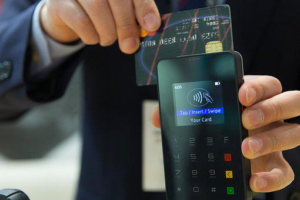How To Choose The Right Business Model In 2023?

1. Determine whose problems your product solves
- B2B – Business to Business: the final consumer is an entrepreneur, not an individual;
- B2C – Business to Customer: promoting products or services directly to their consumer;
- B2G – Business to Government: services or goods are produced for sale to the state.
If we talk only about e-commerce, then the Russian B2B lags behind B2C in terms of development. Although the exact volume of the B2B market is unknown, we understand one thing: of the total sales turnover in this segment, only 4-6% fell on online commerce in 2020. At the same time, B2C has shown explosive growth: the number of online orders increased by 78%.
The following formats are less common:
- C2C – Consumer to Consumer: sometimes called P2P – person-to-person, the model is relevant when individuals interact with each other. This type includes dating applications, sites for the sale of personal belongings (for example, “OLX”), sites for finding landlords;
- C2B – Consumer to Business: here the consumer himself offers the entrepreneur payment for a product or service. An example is the increasingly popular donation system. With it, the user pays money for content (audio, video or text), independently choosing the amount of the contribution.
- C2G – Consumer to Government and G2C – Government to Consumer. C2G implies the ability of a citizen to turn to the government for his needs. The G2C model works in the opposite direction, allowing the user to receive information from the government (Project Diya).
In 2020, the C2C segment was actively developing. Online sales between individuals increased by 87%.
Another trend is the emergence of a new model D2C, Direct-to-Consumer, where a manufacturer supplies a product or service to a customer, bypassing wholesalers, distributors, and retailers.
2. Decide how you will make money on your product
If you don’t know how a startup will make a profit, in 90% of cases nothing will come of it, in rare 10% of success, the reason for this is genius or accident. You cannot rely on this 10% to control this process.
There are some models like the buy-to-let mortgage company model that successfully earn both online and offline.
According to the method of making a profit, business models are divided into many categories that can overlap with each other, consider the main ones:
- F2P – Free to play: Often used to monetize PC games. The user plays for free, but pays for pumping a character, weapon, car and other bonuses;
- Freemium – Free + Premium: the basic version is provided free of charge, and the company earns on the extended one. We chose this option for Postoplan;
- Pay-per-use: more often used by telecom operators and Internet providers, within the framework of this model, the consumer pays for the time of using the service.
- PaaS – Platform as a Service: applicable to cloud resources, thanks to which the user gains access to the platform (as in Microsoft Azure);
- SaaS – Software as a Service: allows the client to use an online service without downloading programs and applications. This is how you create visual content in Canva. We also chose this particular model in addition to Freemium to save the user time and resources;
Some models are more common in offline sales or service-oriented businesses. For example, the lease format. Examples of this are car sharing or wedding dress rental services. Another example is the self-service model popular in supermarkets and fast food restaurants. In this case, the price of the product is reduced due to savings in personnel.
Franchising can also be called an offline model, which is well suited for the restaurant industry and for chain stores. The franchisor sells the franchisee the opportunity to use his brand and all related developments.
Other models are successfully used both online and offline. These include the auction model, in which the price of the product is determined by the buyer who offered the highest bid. This is a common scheme for the implementation of works of art (Sotheby’s, Christie’s).
One of the most promising business models, experts call subscription, is when a client receives a product or service with a certain regularity. For example, you can subscribe to a weekly cleaning service, a magazine, or a healthy breakfast. 70% of entrepreneurs believe that this format is the future of marketing.
Another model is crowdfunding, which can be called relatively young. The global market for this segment reached $ 12.27 billion in 2019, according to QY Research.
The most universal is the Aikido model. All successful companies have used it to some extent. It lies in the fact that entrepreneurs seek to avoid competition by offering a fundamentally different product or service. This is how the Ford T appeared – the first mass car. Before that, cars were only made to order.
3. Combination of business models
It is not necessary to use a pure business model, various combinations are possible.
For example, SaaS and Freemium. Slack and Trello are a popular mix of these two business models.
Analyze your competitors, and find what they have not yet offered, but could potentially improve the quality of service for your user. It is not always that what large market players do not use is unprofitable.
4. Learn from mistakes and improve your business model along the way
When you choose a model for a startup, you do not sign a verdict for yourself, but leave room for an experiment: it is important to change what is not working effectively enough.
It is important to take into account not only user feedback and the results of focus group surveys, which showed a positive attitude towards the chosen monetization model, but also carefully analyze the actions of users themselves, look at statistics, and not be afraid to change something.
Read More: The Top Accounting Softwares in India for Small Business
Checklist for choosing a business model:
- Analyze the key players in your niche in the Russian and international markets:
- Who is their target audience?
- What monetization model is used?
- What is special about their service for the client?
- Determine the target audience of the product and conduct a survey with representatives of your target audience. Three questions to ask business owners:
- Why are you dissatisfied with the services on the market?
- What would you like to add?
- What do you like about the service you use today?
- Choose a monetization model, feel free to combine several models if you see the potential in this mix.
- Answer the question: “Is the resulting business model scalable?”
The scalability of startups today is more of a necessity than a choice. If the answer is no, think about how to change it. If it is positive – happy launch!
FinanceBuzz is an online media platform for finance and economy news, with a focus on keeping the community up-to-date with the latest happenings in the field. From business to policy, from economy to technology, we cover it all.








